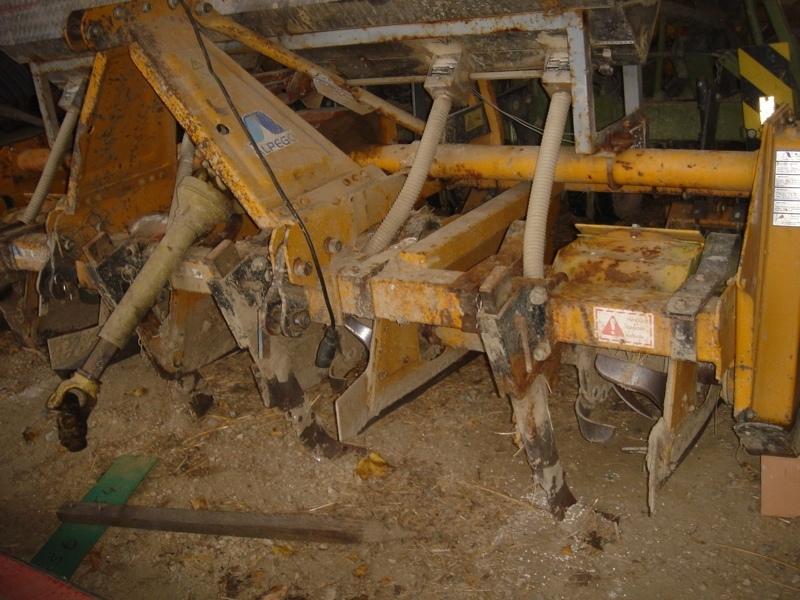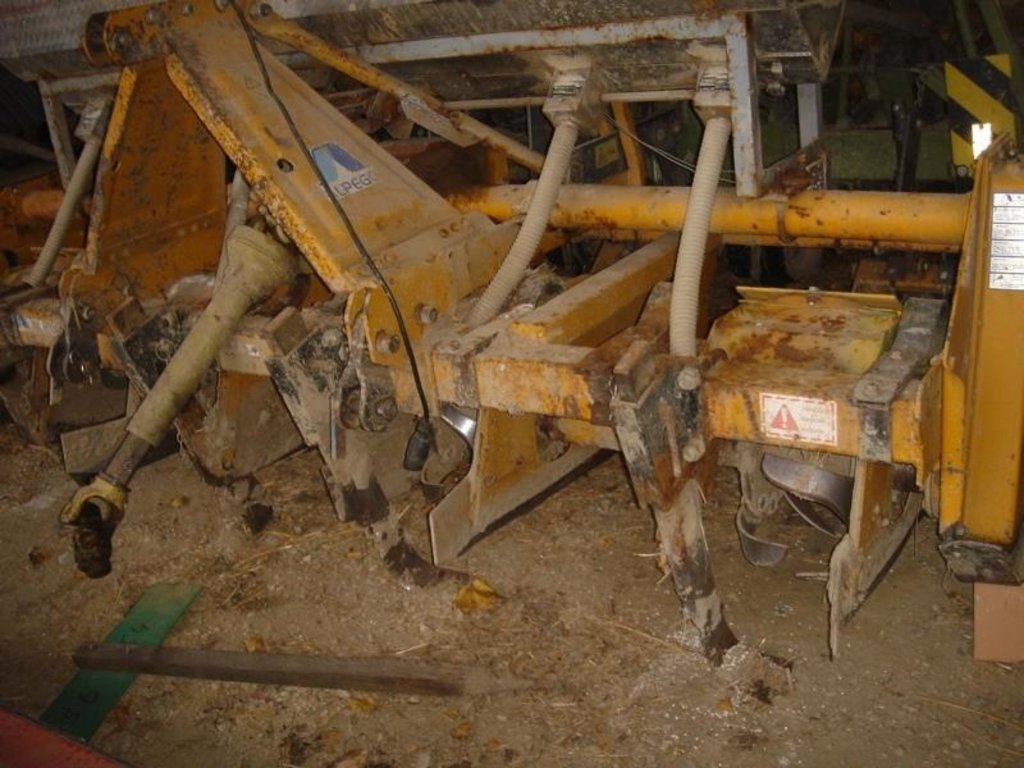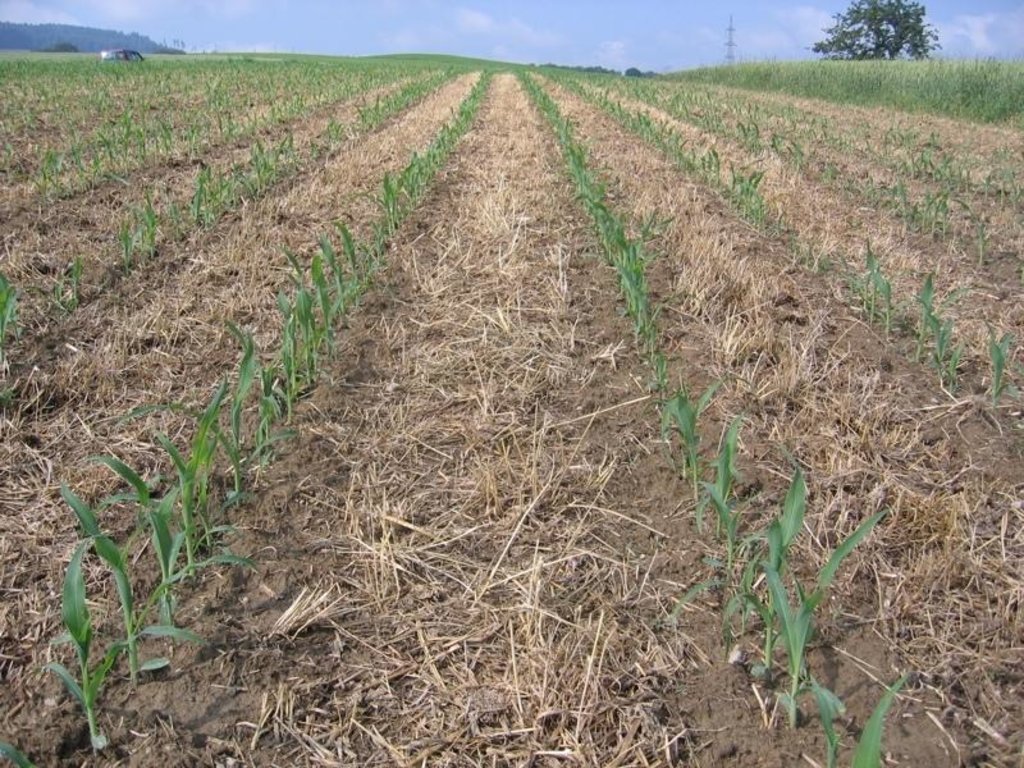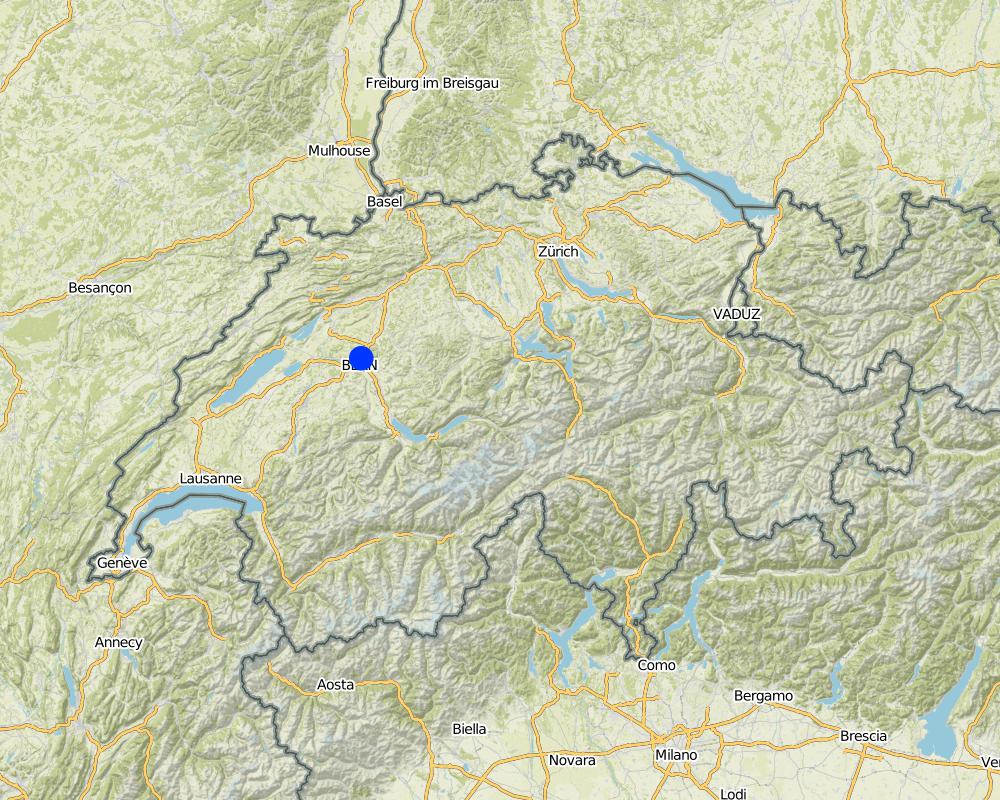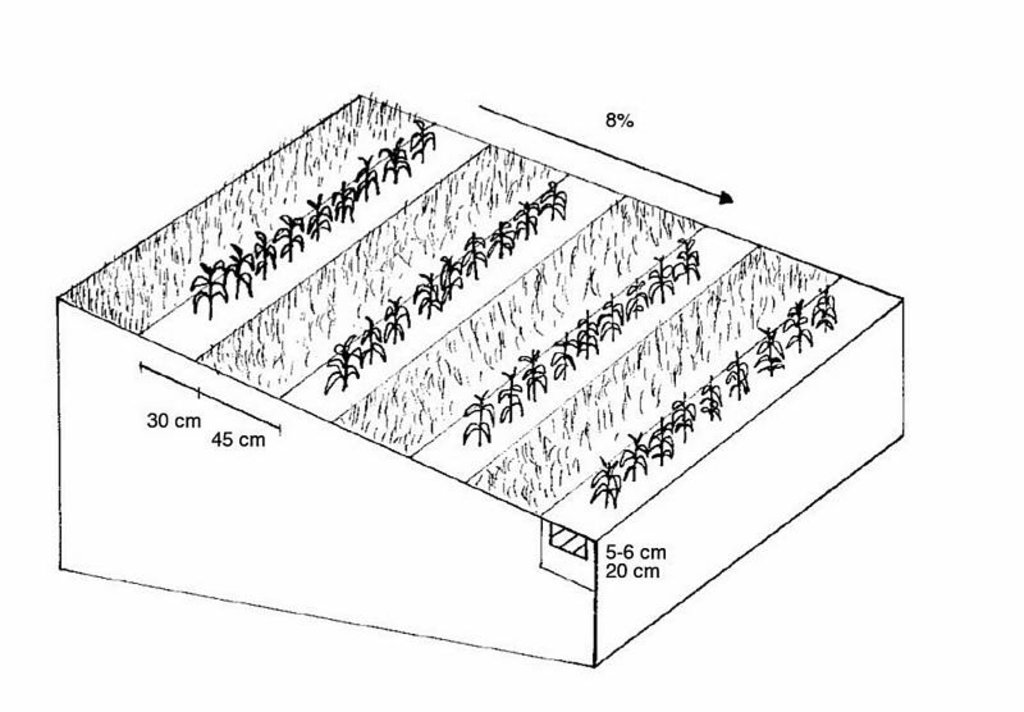Maize strip tillage [Suíça]
- Criação:
- Atualização:
- Compilador/a: Nicole Guedel
- Editor: –
- Revisores: Fabian Ottiger, Alexandra Gavilano
Streifenfrässaat
technologies_1009 - Suíça
Veja as seções
Expandir tudo Recolher tudo1. Informação geral
1.2 Detalhes do contato das pessoas capacitadas e instituições envolvidas na avaliação e documentação da tecnologia
usuário de terra:
Schneider Markus
Schneider Agrarservice
Suíça
usuário de terra:
Bangerter Roland
Suíça
Nome da(s) instituição(ões) que facilitou(ram) a documentação/ avaliação da Tecnologia (se relevante)
CDE Centre for Development and Environment (CDE Centre for Development and Environment) - SuíçaNome da(s) instituição(ões) que facilitou(ram) a documentação/ avaliação da Tecnologia (se relevante)
Bangerter-Gisleren - SuíçaNome da(s) instituição(ões) que facilitou(ram) a documentação/ avaliação da Tecnologia (se relevante)
Schneider Agrar-service - Suíça1.3 Condições em relação ao uso da informação documentada através de WOCAT
O/a compilador/a e a(s) pessoa(s) capacitada(s) aceitam as condições relativas ao uso de dados documentados através da WOCAT:
Sim
2. Descrição da tecnologia de GST
2.1 Descrição curta da tecnologia
Definição da tecnologia:
Maize strip tillage is a technology used for corn cultivation. It cultivates only thoses stripes in which the seed is added to.
2.2 Descrição detalhada da tecnologia
Descrição:
Maize strip tillage is a soil-conservation method used in crop production. First of all the grass in the area needs to be prepared by splattering round-up some 3-10 days prior seeding. Then the actual maize strip tillage machine carves a stripe and the seed are inserted within this 30 cm strip. At the same time fertilizer is added on these cultivated stripes. Between those cultivated stripes the mulch-grass stripes (45cm) are unmechanised and protect the soil by increasing its stability. The work is done within one working unit compared to the traditional technique whereas the farmer needs to drive for each working step separately.
There are some clear ecological advantages using this technology. Like in a minimum tillage system the stability of the soil is enhanced.
Due to these mulch-stripes the matrix of the soil is more complex and therefore the stability is better especially during harvest in September. The interviewed farmer said compaction would occur less and the risk of soil erosion is decreasing. Especially in hilly areas the technology is suitable since soil erosion is a problems when using a plough. Another advantage is the better soil structure due to the mulch stripes and the minimal tillage ensures that the soil is more stable.
A high level of knowledge about the natural environment is a required when adopting this technology. On one hand, the farmer must time the date for seeding adequately to the natural conditions (not too humid). On the other hand, the farmer has to apply Glyphosphat one to three times after the seeding in order to guarantee an optimal growth period for the corn.The interviewed farmer found it problematic to use this amount of Glyphosat and he was not sure about the effects in the water. The timing to start seeding with this technology may be later cause corn is sensitive towards rival plants, low temperatures and humidity. When adopting the technology the farmer needs to have a certain level of knowledge and experience in order to guarantee a sound harvest.
This technology is applied in the village Seedorf (Canton Bern) after the farmers made positive experiences and if they see the economic advantages too. Generally there is only one work step needed for the seeding which lowers the costs compared to the traditional technology with about a third. Furthermore the subsidies of the canton of Berne enables farmers to apply this technology for the first 5 years. In this cycle the areas are usually left with grass first, second cultivated with corn (using maize strip tillage), then sugar beets and after all two years of cereals (wheat and rye) before the cycle starts again.
2.3 Fotos da tecnologia
2.5 País/região/locais onde a tecnologia foi aplicada e que estão cobertos nesta avaliação
País:
Suíça
Região/Estado/Província:
Seedorf
Especificação adicional de localização:
Bern
Comentários:
27.2 km2 are owned by the farmer whereas he is applying the technology on 5 km2. He said that he is hired as a contract worker and applies the technology on approximately 90 km2. Total area covered by the SLM Technology is 90 km2.
Map
×2.7 Introdução da tecnologia
Comentários (tipos de projeto, etc.):
A neighbouring farmer adapted the technology and after the first successful harvest Roland Bangerter bought a machine too some 5 years ago and started apply this technology.
3. Classificação da tecnologia de GST
3.2 Tipo(s) atualizado(s) de uso da terra onde a tecnologia foi aplicada

Terra de cultivo
- Cultura anual
Cultivo anual - Especificar culturas:
- cereais - milho
- cereais - centeio
- cereais - trigo (primavera)
- culturas de raízes/tubérculos- beterraba sacarina
Comentários:
Major land use problems (compiler’s opinion): soil erosion in hillside areas
Major land use problems (land users’ perception): soil degradation in general
3.5 Grupo de GST ao qual pertence a tecnologia
- Perturbação mínima ao solo
- Medidas de curva de nível
3.6 Medidas de GST contendo a tecnologia

Medidas agronômicas
- A1: cobertura vegetal/do solo
Comentários:
Main measures: agronomic measures
Type of agronomic measures: cover cropping, retaining more vegetation cover, mulching, manure / compost / residues, rotations / fallows, minimum tillage
3.7 Principais tipos de degradação da terra abordados pela tecnologia

Erosão do solo pela água
- Wt: Perda do solo superficial/erosão de superfície
- Wg: Erosão por ravinas/ravinamento

Deteriorização física do solo
- Pc: Compactação

Degradação biológica
- Bc: redução da cobertura vegetal
Comentários:
Main type of degradation addressed: Wt: loss of topsoil / surface erosion, Pc: compaction
Secondary types of degradation addressed: Wg: gully erosion / gullying, Bc: reduction of vegetation cover
Main causes of degradation: crop management (annual, perennial, tree/shrub) (the use of plough increases the danger of soil erosion)
3.8 Redução, prevenção ou recuperação da degradação do solo
Especifique o objetivo da tecnologia em relação a degradação da terra:
- Prevenir degradação do solo
- Reduzir a degradação do solo
Comentários:
Main goals: mitigation / reduction of land degradation
Secondary goals: prevention of land degradation
4. Especificações técnicas, implementação de atividades, entradas e custos
4.1 Desenho técnico da tecnologia
Especificações técnicas (relacionada ao desenho técnico):
Technical knowledge required for field staff / advisors: high
Technical knowledge required for land users: low
Main technical functions: improvement of topsoil structure (compaction), increase of infiltration
Secondary technical functions: improvement of ground cover, increase in organic matter
Manure / compost / residues
Material/ species: mulch stripes
Rotations / fallows
Remarks: a cultivation cycle of 5 year is needed
4.3 Atividades de implantação
| Atividade | Periodicidade (estação do ano) | |
|---|---|---|
| 1. | Buying a 120 PS tractor | |
| 2. | Buying a machine for maize strip tillage | |
| 3. | buying a sowing machine |
4.4 Custos e entradas necessárias para a implantação
| Especifique a entrada | Unidade | Quantidade | Custos por unidade | Custos totais por entrada | % dos custos arcados pelos usuários da terra | |
|---|---|---|---|---|---|---|
| Equipamento | 120 PS tractor | Farm | 1,0 | 126000,0 | 126000,0 | 100,0 |
| Equipamento | Machine for maize strip tillage | Farm | 1,0 | 165000,0 | 165000,0 | 100,0 |
| Equipamento | Sowing machine | Farm | 1,0 | 12600,0 | 12600,0 | 100,0 |
| Custos totais para a implantação da tecnologia | 303600,0 | |||||
| Custos totais para o estabelecimento da Tecnologia em USD | 303600,0 | |||||
4.5 Atividades recorrentes/manutenção
| Atividade | Periodicidade/frequência | |
|---|---|---|
| 1. | Adding some round-up on the field one week before technology is applied | 1 |
| 2. | Applying technology maize strip tillage | 1 |
| 3. | Adding herbicide on the mulch stripes | 1-3 |
| 4. | Harvest of corn | 1 |
6. Impactos e declarações finais
6.7 Pontos fortes/vantagens/oportunidades da tecnologia
| Pontos fortes/vantagens/oportunidades na visão do/a compilador/a ou de outra pessoa capacitada |
|---|
|
Prevention of erosion How can they be sustained / enhanced? Maintain green cover. |
|
Improvement of soil quality (fertility, organic matter, moisture retention, soil structure) How can they be sustained / enhanced? Ensure that cover vegetation doesn’t compete with the vines; improve soil properties by applying mentioned agronomic measures. |
|
Contribution to a better balanced and more stable ecosystem (with living space for a wider range of organisms) How can they be sustained / enhanced? Specific management of cover crops (alternating treatment of inter-rows; find solutions to replace application of herbicide). |
| In the long-term economically beneficial because of cutting costs of restoration of soils and fertility loss after heavy erosion events. |
| Possibilities of farm income increase through marketing wine under the ‘vinatura’ label, certifying ecologically produced wine. |
6.8 Pontos fracos, desvantagens/riscos da tecnologia e formas de superá-los
| Pontos fracos/vantagens/riscos na visão do/a compilador/a ou de outra pessoa capacitada | Como eles podem ser superados? |
|---|---|
| General competition of water and nutrients depending on climate, soil depth and species of cover vegetation | Eliminate/reduce competitive effect of cover vegetation by cutting/mulching vegetation or ripping/ploughing soil. |
| Application of herbicides around vines because of undesirable vegetation in proximity of vine | Find alternative solutions, or minimise application of herbicides. |
7. Referências e links
7.1 Métodos/fontes de informação
7.2 Referências às publicações disponíveis
Título, autor, ano, ISBN:
Güdel N . Boden- und Wasserkonservierung in Schweizer Rebbergen. Ein Beispiel im Rahmen von WOCAT. Unpublisheddiploma thesis.. 2003.
Disponível de onde? Custos?
Centre for Development and Environment (CDE), University of Berne
Links e módulos
Expandir tudo Recolher tudoLinks
Não há links
Módulos
Não há módulos


